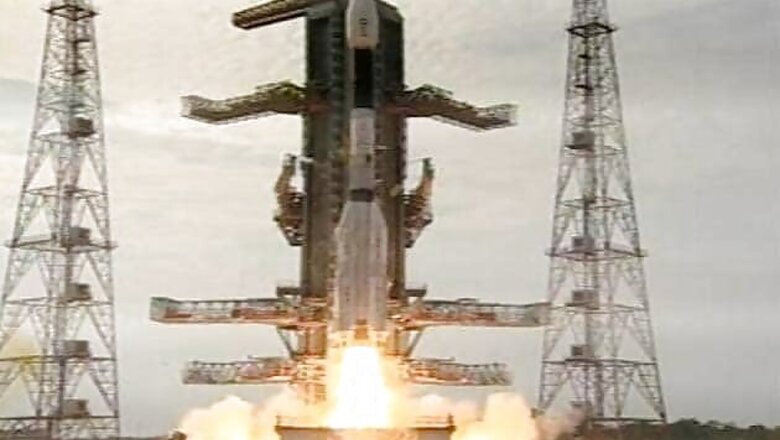
views
Sriharikota: Indian Space Research Organisation (ISRO) suffered a major setback on Thursday when the Geosynchronous Satellite Launch Vehicle (GSLV-D3), which was launched using an Indian-designed and built cryogenic engine for the first time, failed and fell into the Bay of Bengal.
The rocket had a perfect lift-off from the Indian Space Research Organisation's (ISRO) Satish Dhawan Space Centre (SDSC) launch pad in Sriharikota at 1627 hrs IST.
However, the flight was not perfect with the GSLV-D3 failing to send any data after 505 seconds of taking off. The rocket deviated from its path and the scientists monitoring the launch said that they did not receive any speed and altitude data from the vehicle.
ISRO Chairman K Radhakrishnan said the vehicle tumbled, lost its control, altitude and finally splashed into the sea.
Addressing a press conference on Thursday evening Radhakrishnan said,"Sorry to inform that the flight testing of the indigenous GSLV D3 carrying GSAT-4 mission was not successful."
Though Radhakrishnan initially suspected that the vernier engine could not have ignited, he later said, "We are not very sure, after looking at the flight data, whether the cryogenic main engine, did ignite."
He said the cause of the failure would be ascertained in two-three days after reviewing the flight data.
"Our team has all the capabilities, the necessary resilience to do analysis, take corrective measures and the target is to do all the corrections within a year and have the next flight testing...this is the target," he said.
Radhakrishnan said performance of the vehicle was normal upto the "burn out" of the second stage.
"Everything was okay till the end of GS2 (second stage) upto 293 seconds after which the cryogenic stage was to ignite. We are not very sure whether it did ignite," he said.
Cryogenic engines, giving additional thrust, help in launching heavier satellites into higher orbits.
ISRO scientists announced that they stopped receiving data from the rocket, giving way to gloom at the centre as the mission failed after 18-year long effort to develop the cryogenic technology and demonstrate the country's space prowess as its answer to technology denial by major powers.
The GSLV-D3 was to put the 2.2-tonne communication satellite GSAT-4 into the geo transfer orbit (GTO) on Thursday evening.
India has been developing the cryogenic engine since 1993. This is the second failure in the GSLV series after GSLV-F02 carrying INSAT-4C satellite plunged into the Bay of Bengal in July 2006.
Till now ISRO had been using Russian cryogenic engines in its GSLV missions as the United States had forced Moscow not to sell the cryogenic technology to India in 1992.


















Comments
0 comment